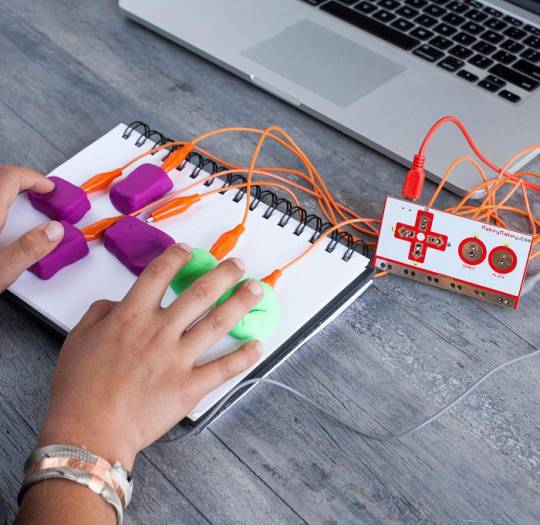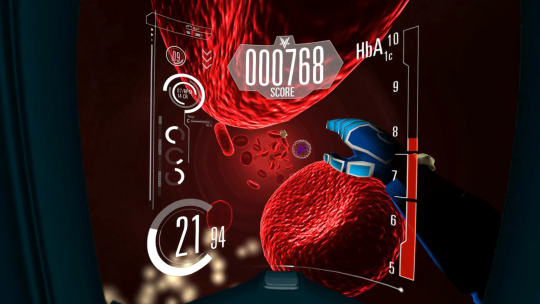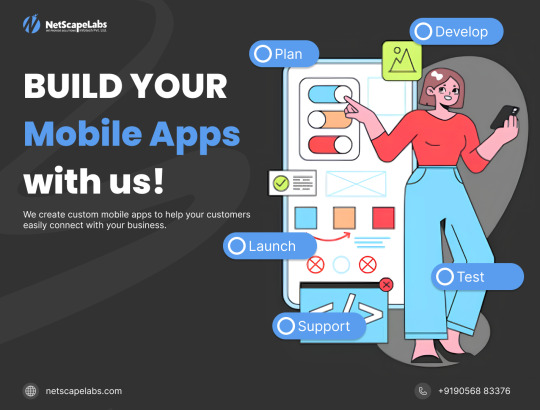#Gamification in learning and development
Explore tagged Tumblr posts
Text
The Impact of Gamification in Learning and Development: SB Animation Leads the Way
In recent years, gamification in learning and development has emerged as a powerful tool for engaging employees, enhancing skills, and boosting performance. The integration of game-like elements into training programs can transform traditional educational methods, making learning more interactive and enjoyable. SB Animation, a leader in creative design and digital solutions, has been at the forefront of incorporating gamification into training and development initiatives, helping businesses create more dynamic and effective learning environments.
What is Gamification in Learning and Development?
Gamification in learning and development refers to the use of game mechanics, such as points, levels, challenges, and rewards, to encourage engagement, participation, and achievement within educational or training programs. It transforms the traditional approach to training by introducing elements of fun and competition, motivating learners to progress through courses, retain information, and apply new skills effectively. The concept is based on the idea that people are more likely to engage with learning experiences that mimic the enjoyment and satisfaction of playing a game.

At its core, gamification helps to make the learning process more engaging, interactive, and enjoyable. By adding elements of fun and competition, learners are encouraged to take an active role in their own development. This shift in approach not only makes training more enjoyable but also helps in better knowledge retention and skill application.
Why Gamification Works in Learning and Development
Gamification works because it taps into intrinsic motivations, such as the desire for achievement, recognition, and competition. By using elements like leaderboards, badges, and rewards, learners are motivated to complete tasks and challenges, making the experience feel more like a game than a traditional educational process. The instant feedback that comes with completing levels or earning rewards provides learners with a sense of accomplishment, which can increase their motivation to continue progressing.
The Future of Gamification in Learning and Development
The future of gamification in learning and development looks promising, with more organizations recognizing its benefits in enhancing employee engagement and performance. As technology continues to evolve, gamified learning experiences will become even more immersive and interactive, incorporating virtual reality (VR) and augmented reality (AR) to further enhance the learning process.

SB Animation’s commitment to innovation means that the company is well-positioned to lead the way in creating next-generation gamified training solutions. As businesses continue to seek new ways to engage their workforce and improve skills, gamification will play an increasingly important role in shaping the future of learning and development.
Conclusion
Gamification in learning and development is revolutionizing the way businesses approach training, making it more interactive, engaging, and effective. SB Animation’s expertise in creating gamified content allows organizations to provide their employees with unique learning experiences that not only increase knowledge retention but also foster motivation and collaboration. As gamification continues to evolve, SB Animation will remain at the forefront, helping businesses create dynamic and enjoyable training programs that drive real results.
0 notes
Text
gamification in learning and development
Gamification in learning and development, therefore, is a methodology where learning fun is brought forth through the addition of game features and elements such as challenges, rewards, and tracking the progress. Gamification keeps people motivated and hence makes education seem more exciting because learning can, in a manner of speaking, be a bit of a game.
In businesses, gamification is used to provide a rich learning experience for employees. Instead of the old ways of doing things, employees can engage in fun games to learn new skills. They can earn rewards in the process, motivating them to learn further.
This method also helps children in schools keep their minds active and focused. When children learn playing games, the more probable they are to pay attention to what they have to do so that they would do better on their studies. The instant feedback provided in the games helps students know what they do right and where they need to improve.
Macrobian Games is a company specializing in gamification in learning and development. It has developed games meant to help learners at any age learn new skills. In this case, the learners are able to increase their knowledge as they enjoy the games. for more information visit on :
#gamification in learning and development#gamification#made with unity#game development#unity 3d#game#game of thrones#games#indie games#ask game#game dev#pc games#india#ahmedabad#gujarat
0 notes
Text
Revolutionizing Learning: The Power of Pop-Up Learning Cafes
The Gamification Company offers an innovative approach to learning and development through Pop-Up Learning Cafes. These are designed to break barriers in traditional learning methods by fostering an informal, high-energy environment. Here’s a summary of what they entail:
Duration: Each Espresso Learning POD Session lasts between 60-90 minutes.
Learning Approach: Utilizes the Neuroscience of Play methodology for powerful experiential learning.
Flexibility: Can be set up in various settings, including indoor, outdoor, or digital spaces.
Requirements: A good supply of coffees, teas, and water; Espresso Learning POD Session kits; A Certified Facilitator trained in Cafe Style learning.
Programs Offered: A wide range of themes and topics spread over a few hundred activities, with the option for customization based on objectives.
Key Topics: Leadership, Customer Obsession, Entrepreneurial Spirit, Coaching, Ownership, Innovation, Diversity, Sales, Accountability, Creative Thinking, Negotiations, Unconscious Bias, Communication, and Engagement.
Trainer Certification: Master Facilitators deliver initial programs, followed by training and certification for your trainers to run customized programs.
Pop-Up Learning Cafes are a unique blend of focused micro-learning sessions designed to deliver concrete results within a short timeframe, making learning engaging and effective
0 notes
Text
The Future of Teaching and Learning: Harnessing AI & Innovative Strategies for Educators
🚀 Discover the exciting future of teaching and learning! Learn how AI and innovative strategies are transforming education for the better. Don't miss my latest blog post on the Future of Teaching and Learning
With advancements in artificial intelligence (AI) gaining momentum, teaching and learning needs to evolve rapidly. As educators, we must be prepared to adapt and embrace these changes to ensure our students are equipped for the ever-changing world they will enter. Below, I discuss some of my assumptions, explore both conventional and unconventional answers to the future of teaching and learning,…

View On WordPress
#AI in education#change management#collaborative learning#cultural values#education workforce#emotional intelligence#empathy#future of teaching#gamification#GPT#Graeme Smith#kaupapa Māori#Pasifika values#Personalized Learning#Professional Development#teaching innovation#technology integration#thisisgraeme#unconventional approaches
0 notes
Text
Epic meaning and why it should be used in your learning and development
I have been banging on about this for what seems like decades... so who else thinks Epic meaning is important?
Epic meaning has become an increasingly important concept in the field of education, particularly when it comes to learner engagement. In essence, epic meaning is the idea that educational activities should be meaningful and purposeful, encouraging learners to become fully engaged in the learning process. At its core, epic meaning is based on the concepts of gamification, which is the application…

View On WordPress
0 notes
Text
Sharing my language learning apps!~

I am not such a fan of "1000 and 1 app for every language" tbh, because mostly, i am just getting overwhelmed. I don't even use those every day, exept for 3 or 4 - and it's okay~
But anyway - my apps and their uses!
GERMAN // top and bottom row
Babbel - my main app, the best app for learning German for me, esp because there's a German course for Ukrainian learners. Also, it can be used w/o paying and w/o hella annoying adds. I love it.
Flashcards - basically for me, its Anki but better. Oh, but how can something beat The Anki? Answer is simple, because oh my siblings in Christ, how miserable I was, trying to set up Anki. It's long, its sad, and most of the time there's no sound! Flashkards, in turn, can be set up in minutes, even less, and has voice overs! In any languages! So I can even set up German/Ukrainian decks! Really useful, and, again, no ads.
Clozemaster - my gamification/listening stuff. I even have a guide for it!~
Tutor Lily - the least annoying chatbot for me, so I can train german speaking&writing. A bit silly, but a lot better for my anixiety than speaking to a real person! Has only 10 free messages per day, but if you speak/write a lot, you can really make them count.
Deutsche Welle - I honestly don't really love their explanation and find them a bit lacking, but I wanna use their german course as a bit of a crutch to my real life one!~
LEO - it's not a learning app per ce, its a dictionary. And really good one, at that! Really useful for me to find those pesky articles xD
CHINESE // second row
HelloChinese - my main app. And really, it's the app that brings me the most joy. It has native people speaking, it has a funny mascot, and honestly, it's first language learning app where I really think about buying premium at some point. It's really good, and fun!!
Lingodeer - a bit less fun and more focused. I find it a lot more "school-like", if that's make sence. Almost no fun, 100% concentration on a study. I am using it from time to time, but it's a lot harder for me to stay commited to it.
Immersive Chinese - basically a character drill app. A lot of concentrated knowlege and uses for a specific characters, I honestly use it and Lingodeer pretty interchangebly.
JAPANESE // third row
Renshuu - my main app. It has character drills, it has fun, it has everything. Honestly, one can use this as their main app, and with some books an youtube get pretty good, I think!~
Learn Japanese - kanji & hiragana drills, a bit extra to rensuu ones!
YuSpeak - basically a bit extra, as well, but in sentences and learning. Haven't use it as much as Renshuu and Lean Japanese, but it's a lot similar to HelloChinese (even from the same developers? Not sure) so hopefully will use it more in future~
Please, note that no app, even the greatest app in the world, will teach you the language by itself. But it can always be a fun hobby, give you a really strong foundation for a future course, or even just give you a bit of a taste for language to understand, do you want to commit or not, and it's tottaly, 110% okay.
Just make sure to not get unrealistic expectation of "I finish course in app X and will be fluent". It does not work like that, nor should it.
#language learning#langblr#german#chinese#japanese#german language#japanese language#chinese language#chinese langblr#japanese langblr#german langblr#studyblr#language lover#android apps#language learning apps
34 notes
·
View notes
Text


Jack is disenchanted and disappointed. As exciting as it was to talk to Tiny Can, he'd expected more of the AI Therapist.

Sai went back to sleep again, he's exhaused from crying and reliving his worst memories. And Ji Ho and Jack decided to play a bit. But the only 'game' available is a boring puzzle... Jack: "Oh my, I don't know what's more boring. This puzzle or our therapy... Have they never heard about gamification? Or fun? Or to make it a bit more interesting?" Ji Ho agreed. Though the insight about Vlad and his own locked away feelings was interesting. Maybe he should follow and explore these thoughts a bit deeper.

Suddenly Saiwa was wide awake: "What did you just say, Jack?"
Jack: "Uh - probably something wrong? You finish the puzzle, Ji Ho, I go and run."

Saiwa: "No! That's actually brilliant!
Gamification! The Game!!!
We combine the AI with our game and make it a Therapy Game!" Jack and Ji Ho: "..." (Haha you can see how Jack and Ji Ho's brains are working ^^') Saiwa: "And not just for us - for other creatures too! This would have been so helpful when we'd been so scared and alone! And who knows? This could be a sucess and we'd make money to pay Rubyn and the others back!" We barely get to see Saiwa this excited ^^' But here some of his main interests meet, his love for games and computers - and being there for others and help them.

Vlad went back home to grab Saiwa, Jack and Ji Ho's content they'd already had created for their game over the last months and then they started their epic gathering to develop the:

For the computer game they'd planned, Jack already made the concept art and design, Vlad wrote and Ji Ho composed the music and soundscapes. They are going to feed all this to Tiny Can and see what kind of 'gamification therapy' he'll create. How exciting! (For me it really is! Imagine this: a game that also is a therapy - supported by an AI! How amazing would that be if you could see the things that make you suffer from a distance and you'd find solutions for them by doing insightful AND funny AND interesting quests! You'd gain helpful new habits and get rid of unhealthy ones by playing a game! Where I live it's so hard to find a therapy place. We have to wait up to a year -.- I do have high hopes in AI. You could go by your own pace. And you wouldn't even have to leave the house!)

After a very long gathering, Ji Ho and Jack relaxed in the hot tub. Jack's pain is thanking him. They sat silent for quite a while, lost in their thoughts. Very unusual for Jack, but his brain is running on hyper speed now. He's so excited :3 And Ji Ho was pondering about his locked down feelings. The Bond made it easy for him to love Luci. They had a whole different approach to each other. While his relationship with Vlad was doomed from the beginning (their story in (kind of ^^') short -> here).

The only ocassions where Ji Ho was really comfortable with Vlad was, when they touched and made love. And this is also a benefit of the Bond and Luci because Ji Ho hated being touched in the beginning. After all he'd seen at the House of the rising Sun in the slums of Sulani. But Luci had approached him slowly and tenderly. Ji Ho shared his thoughts with Jack: "Do you think this might be a way to become more comfortable with Vlad and finally be able to love him? And to find my buried down feelings?" Jack: "I think that's brilliant! At least one of us learned something in that therapy. When you charge the Bond later, just try a bit more and we'll see how it goes."

A little later Vlad came down: "Uhm, I'm leaving now. The Bond..."

Ji Ho left the hot tub and went over to Vlad to charge the Bond - and try his new theory... They embraced each other as usual and then Ji Ho tried to kiss Vlad.

But Vlad moved his head aside and whispered: "I want nothing more than you - but not like this." Vlad's breath ghosted over Ji Ho's still wet skin and made him shiver.
Vlad still has his principles - not to forget his foolish pride. No way he's going to have a plain physical relationship with Ji Ho - without love. There is no 'two out of three ain't bad' or 'it's better than nothing' in Vlad's world ^^' Only 'it's all or nothing'. He would do anything for Ji Ho, but he won't - and can't do that. It would break him apart. That does not mean it was easy for him to not give in and leave. Vlad really is the master of self control ö.ö

And then Vlad left. Ji Ho seems a bit piqued after Vlad's rejection ^^'

'I can't stop this feeling Deep inside of me Girl, you just don't realize What you do to me
When you hold me In your arms so tight You let me know Everything's all right
I'm hooked on a feeling I'm high on believing That you're in love with me'
Hooked on a Feeling - Blue Swede from the OST of Guardians of the Galaxy I
Outtakes
He will be mine, oh yes, he will be mine.


Yang Mal: "Can we grill our corncobs now?" 🌽 Saiwa: "Uhm - sure ö.Ö'"

Ji Ho checking the mail... 📬 Who might have sent that letter when Ji Ho looks like that?

Tyalindo watching the sun set 🌅


From the Beginning ~ Underwater Love ~ Latest 🕹️ 'Therapy Game' from the beginning ��️ here 📚 Previous Chapters: Chapters: 1-6 ~ 7-12 ~ 13-16 ~ 17-22 ~ 23-28
#therapy game#The White Lily#underwater love#simlit#the game#saiwa#jack callahan#lessons in love#charging the bond#vlad's foolish pride#vladimir tepesz#run jack#woo ji ho#giga byte#tomarang#sims 4 vanilla#Tiny Can#sims#sims 4 story#sims 4#simblr#ts4#sims 4 for rent#Spotify
59 notes
·
View notes
Text
I want to develop a language learning app that uses gamification but is also a lot more customisable because people are motivated by different things and want to focus on different things
22 notes
·
View notes
Text
CODING FOR KIDS WITH SPECIAL NEEDS
The world of coding can be scary, with obscure symbols and complicated logic. What if we told you it might be a creative and problem-solving playground for children with special needs? Intrigued? Buckle up, because we’re going to discover the thrilling world of adaptive coding strategies!

Here’s how coding transforms into an inclusive playground:
Block-based coding language: Scratch, Blockly, and Codemonkey Jr, these drag-and-drop interfaces make coding more visual and intuitive, which is ideal for children who struggle with traditional text-based coding. Imagine making colorful animations with just a few clicks!
Voice-activated coding: Speech recognition software allows children with physical restrictions to code using voice commands. This enables kids to contribute and express their creativity via code.
Gamification: Gamifying learning makes it more enjoyable and inspiring. RoboGarden, for example, turns coding into a game in which children solve puzzles and accomplish challenges, thus fostering problem-solving abilities in a fun way.
Physical computing: Makey Makey and Sphero robots are two examples of tools that help to connect the digital and physical realms. Coding becomes tangible and interesting for kids when they can program their robots to overcome difficulties or make their own musical instruments.
Multisensory learning: Multisensory learning environments are very beneficial for kids with special needs. Interactive coding exercises that combine visual, tactile, and audio components improve learning and memory. Through the combination of physical building and programming, interactive coding toys such as Botley the Coding Robot or LEGO Education SPIKE Prime offer a hands-on learning experience.

Several initiatives have successfully implemented adaptive learning techniques to teach coding to kids with special needs:
CoderDojo’s Autism Pilot Program: The international network of coding clubs CoderDojo has introduced a trial program, especially for kids with autism. Through the use of customized support, visual aids, and sensory breaks, the program established a warm and inviting atmosphere in which kids could flourish.
Tech Access: TeachAccess promotes accessible and inclusive design in technology-based learning. Their materials and training courses give teachers the skills and resources they need to design coding curricula that are accessible to learners of all skill levels.
Apple’s Everyone Can Code Curriculum: All students can benefit from inclusive and accessible coding instruction thanks to Apple’s curriculum, which includes activities and materials designed specifically for students with disabilities.
Remember: It’s all about finding the correct match! Investigate multiple coding platforms, try out new strategies, and celebrate little wins. There is no one-size-fits-all solution, so customize the learning experience for your child’s individual needs and interests.
Coding is more than just building snazzy websites or mobile apps. It is about developing problem-solving abilities, promoting creativity, and instilling confidence. By embracing adaptive learning methodologies, we can provide access to this exciting world for all children, empowering them to become future coders, inventors, and innovators.
#coding#programming#education#future#digital world#innovation#tech#coding for kids#artificial intelligence#coding course#adhd#autism#neurodivergent#neurodiversity#autistic#asd#lego builds#makeymakey
7 notes
·
View notes
Text
Gamification in Learning and Development: How SB Animation is Transforming Employee Training
In the fast-evolving world of business, organizations are continually seeking innovative ways to enhance employee training and development. One approach that has proven to be incredibly effective is gamification in learning and development. At SB Animation, we specialize in using gamification to create powerful learning experiences that help employees develop new skills while staying motivated and engaged throughout the process.
What is Gamification in Learning and Development?
Gamification in learning and development refers to the use of game mechanics, such as points, levels, badges, and challenges, in educational contexts. Instead of traditional, passive learning methods like lectures or manuals, gamification incorporates elements that encourage active participation, competition, and achievement. By turning training programs into interactive, game-like environments, businesses can foster a sense of accomplishment, reward, and friendly competition among employees.

At SB Animation, we utilize cutting-edge gamification strategies to create immersive, engaging training experiences that go beyond simple knowledge transfer. Our goal is to make the learning process enjoyable, motivating employees to complete training modules and develop their skills faster and more effectively.
The Benefits of Gamification in Learning and Development
Gamification offers numerous benefits that can significantly enhance the effectiveness of learning and development programs. One of the primary advantages is increased engagement. Traditional training methods can sometimes be monotonous and difficult to retain, but gamification turns learning into an interactive and enjoyable experience. When employees are more engaged, they are more likely to stay focused and retain information, which leads to better overall results.
Gamification also encourages healthy competition, motivating employees to push themselves to reach higher levels or earn more rewards. By incorporating leaderboards, achievements, and progress tracking, gamification fosters a sense of accomplishment and drives employees to keep improving. This sense of achievement not only boosts morale but also encourages employees to complete training programs that might otherwise feel tedious or overwhelming.
Furthermore, gamification in learning and development helps employees develop real-world skills in a controlled, risk-free environment. By simulating situations and challenges they may face on the job, employees can learn how to solve problems, make decisions, and work collaboratively—all while receiving immediate feedback on their performance. This immediate feedback loop helps reinforce learning, providing employees with the opportunity to learn from their mistakes and improve continuously.

SB Animation's Approach to Gamification
At SB Animation, we understand the importance of creating tailored, impactful training solutions that resonate with your organization’s unique needs. We work closely with businesses to design gamified learning experiences that align with their goals and culture. From interactive training modules to immersive simulations, we use gamification to create engaging content that enhances employee development.
Transform Your Training with Gamification
If you’re looking to elevate your organization’s training programs and improve employee engagement, SB Animation is here to help. Our expertise in gamification in learning and development allows us to design customized, interactive training experiences that foster learning, motivation, and growth.
0 notes
Text
gamification in learning and development
Gamification in learning and development seeks to make education enjoyable by using game-like elements. It includes things like points, badges, and challenges that make learning fun and interesting. This method keeps learners motivated and interested in acquiring new knowledge.
Gamification in learning and development at work is one of the greatest ways to train employees in a business. It makes dull training exciting. Employees can get rewards for their tasks, so they feel proud of their progress. Employees learn skills much better and quicker through gamified learning.
Gamification works well even in schools. It keeps students focused and on track. It is through playing games that children learn lessons of life while having a good time. This keeps the students remembering their lessons and working hard to become better.
Macrobian Games is one company that specializes in gamification for learning and development. They develop games that make learning fun and effective. These games help both children and adults learn in an interactive and enjoyable way. for more information visit on :
#game development#game of thrones#made with unity#indie games#game#games#unity 3d#game dev#pc games#gamification in learning and development#india#ahmedabad#gujarat
0 notes
Text
15 QUESTIONS FOR 15 FRIENDS
I was tagged by @livwifeofkarl, @krakenteacups, @eye-scream-girls and @sherlockig Thank you friendos <3
Are you named after anyone?
No. Good ol' fashioned Bible name.
When was the last time you cried?
It's been a while. Since I started a new ADHD medicine the big feels have been very tamped down. I got a little misty this morning thinking about how Voyager I is probably busted beyond repair.
Do you have kids?
No, and I don't want them. I work with children and derive a lot more satisfaction from working with them than I would if I had to actually provide 24/7 care. Sometimes I wanna eat popcorn for dinner in my underwear at 9pm, okay?
What sports do you play/have you played?
I do trail running, bouldering, weight lifting, and would love to join the local dodgeball league.
Do you use sarcasm?
I used to a lot more, but I specialize in ADHD/aut and sometimes it has the opposite impact on students who haven't learned the nuances of it yet. If I do use it, I provide a primer immediately after.
What is the first thing you notice about people?
I don't look closely at people, and when I do I start at the periphery, so hair and shoes and general shape. I notice glasses before face, but when I decide someone is sufficiently interesting enough to lock in and listen I focus in on their eyes.
What’s your eye colour?
Grey
Scary movies or happy endings?
I use horror movies to help regulate my nervous system.
Any talents?
I think I am a decent communicator. One of my special interests is perspective taking, and I've worked hard to develop my listening skills so I can learn more about others and their experience. I am good at making people feel comfortable and skilled at encouraging people to try things outside of their comfort zone. I also like to write.
Where were you born?
PNW
What are your hobbies?
See sports above, also writing poetry and fiction, writing/running/playing TTRPGs and just gamification in general.
Do you have any pets?
A chiweenie and a tarantula
How tall are you?
5’8”
Favourite subject in school?
English, Creative Writing, Astronomy, Psychology
Dream job?
I do not dream of labor, but I do love teaching.
11 notes
·
View notes
Text
WWE 2K24 Review - Another Strong Push - Game Informer
New Post has been published on https://thedigitalinsider.com/wwe-2k24-review-another-strong-push-game-informer/
WWE 2K24 Review - Another Strong Push - Game Informer


WWE 2K24 leverages WrestleMania’s impending 40-year milestone to celebrate the event, and it proves to be a party worth attending. Enjoyable additions and smart improvements bolster its steadily improving formula, making it the strongest in-ring outing since the series’ return.
2K24’s control scheme remains largely unchanged from 2K23 but boasts neat new mechanics, such as the trading blows mini-game. This gamification of the back-and-forth “boo/yay” punch trope adds a fun wrinkle to combat. Other well-worn in-ring moments to receive attention include setting up big dives onto a mob of opponents; I rarely use it, but it’s nice to have. That sentiment applies to the game’s new match types: Casket, Ambulance, and Special Guest Referee. I’m generally lukewarm on these stipulations in real life and I won’t be rushing to play them often here, but they’re replicated well. I especially like how Special Referee sports a meter that limits ref shenanigans to keep it from being totally one-sided should you face a crooked official. It also fosters strategic cheating for the player in stripes.
A staggering roster of over 200 Superstars out of the box varies from pretty good to spot-on in the looker department. I also appreciate smaller presentational touches, such as having real-life referees like Charles Robinson and Jessika Carr appear for the first time. Regardless of whose boots you wear, playing 2K24 remains a largely good hands-on experience, even if some moves could stand to be less mechanically dense. Forgetting all of the offensive options at your disposal is easy, but a robust tutorial helps simplify this learning curve. Existing match stipulations remain entertaining whether playing alone or online, though the latter destination is, at publishing, a tricky proposition thanks to spotty connections.
[embedded content]
Showcase mode allows players to relive iconic bouts throughout the first 39 WrestleManias. Taking into account wrestlers who can’t appear due to current employment in rival organizations or for being generally problematic, it’s a strong curation of matches. Corey Graves’ commentary during transitions to real footage adds a nice touch compared to last year’s silent cutscenes. I also love that button prompts for objectives now appear on-screen, reducing trips to the menu screen to figure out how to execute a specific maneuver. Showcases’ wacky finale isn’t quite as memorable as last year’s big twist, but the mode is an overall improvement over 2K23’s rendition and a great celebration of WrestleMania that inspires me to rewatch my favorite matches from the event.
The dual story-driven journeys of MyRise present more narrative forks stemming from pivotal decision-making moments. Whether you play an indie legend navigating the mainstream waters of WWE or build the credibility of a low-card act chaotically thrust into the World Title picture, I like how choices pack more meaningful engagement to their overall enjoyable tales. It’s delightfully silly at points, and I also like seeing characters and plot points from last year’s MyRise reappear here, adding a welcomed continuity to 2K’s alternate WWE universe. Thankfully, created characters and unlockables finally carry over into more modes, adding deeper returns to my investment in MyRise.
MyGM, a personal favorite destination, remains a good time bolstered by expanded match types, GMs, talent interactions, and other options. It also feels more strategic now that you can level up individual talent by placing them in certain matches and negotiate Superstar trades between brands each season. Although Universe mode is less my jam, I’m happy to see the giant sandbox sim get options such as Money in the Bank cash-ins and run-ins, plus more cutscenes that add to its TV-like presentation. The card-collecting-themed MyFaction has never been my cup of tea, and 2K24 doesn’t change this, but it’s nice to see it receive more depth in match types and competitive multiplayer options. The already stellar creation suite sports additional items to build the coolest – or silliest – Superstars, arenas, entrances, or championships you can concoct, but don’t expect any major changes to its reliable template. That last point applies to nearly all of 2K24’s offerings: good iterations of an established formula.
2K24 sees Visual Concepts layer on quality new bricks to WWE 2K’s strong foundation while sanding away some rough edges. The series has settled into an exceptional, if very familiar, blueprint, and I would love to see a bigger shake-up in the future, but the result offers the best package since the franchise returned in 2022. If you’re a curious fan who’s held off on jumping back into the digital ring, 2K24 is as good an argument as any to shake off the ring rust. For diehard enthusiasts, this year’s entry won’t bowl you over in the broad sense, but its incremental updates and continued polish make it a worthy contender for another year.
#2022#2024#ambulance#attention#box#brands#change#Developer#easy#employment#Foundation#Future#game#games#gamification#hands-on#how#how to#investment#it#learning#LESS#life#looker#mechanics#menu#milestone#money#One#organizations
0 notes
Note
I have a stable job and I'm pretty good about saving but recently I've been so curious about starting my own business. I'm not sure what kind but I don't think I'm interested in doing dropshipping or those things I get ads for online. Then again, those are the ones that tend to be more passive... You've done 9 different businesses, did you have a favorite one? If so, what was it?
My favorite one so far was developing an app. It was really challenging and I learned how to graphic design because of it and now I’m learning how to code. It really forced me to think outside of the box because it was like having to learn a new language in order to find solutions. The psychological element of it was also fascinating like studying the different ways us human interact with different gamification, colors, sounds, shapes, and notifications. The people I met and got to work with in this industry are also really nice, mostly very high quality individuals.
There are more ways to create money passively than we think. I would probably avoid anything I get ads for. Also, it’s ok to have businesses that aren’t passive but are still making you money. You can learned how to delegate and eventually get to a point where the business runs itself without you constantly being there physically. It’s true that the most profitable businesses are the boring ones (solving peoples problems).
9 notes
·
View notes
Text
AI is Shaping the Future of Educational Apps

Artificial Intelligence is transforming education, making it more personalized, efficient, and engaging. Here’s why this is so important:
Tailored Learning Experiences: AI adapts educational content to meet each student’s unique needs, enhancing their learning journey and boosting outcomes.
24/7 Support: AI-driven virtual tutors offer around-the-clock assistance, helping students overcome challenges and stay motivated.
Data-Driven Decisions: Educators can use AI insights to refine teaching strategies and address learning gaps more effectively.
Administrative Relief: Automating tasks like grading and scheduling frees up valuable time for educators to focus on interactive teaching.
Engaging Interactions: AI powers immersive experiences through gamification and simulations, making learning both enjoyable and impactful.
The integration of AI in Educational Apps is not just a trend — it’s a crucial advancement that addresses the diverse needs of learners and educators alike. By embracing these innovations, we can make education more Accessible, engaging, and effective.
Building Your Own Business App If you’re looking to develop your own business app, partnering with a leading app development company in India is a smart choice. In particular, app development company in mohali and Chandigarh offer a talented pool of professionals skilled in creating custom, high-quality apps tailored to your business needs. By leveraging their expertise, you can elevate your business with a bespoke app. A Mohali-based development company can provide the local knowledge and personalised attention needed to turn your vision into reality. NetscapeLabs Infotech Pvt. Ltd. is an excellent option for anyone seeking top-tier app development services.
2 notes
·
View notes
Text
◦ Lets study some damn German ◦
A collection of my main online resources that have been found and sorted by me for my personal use. Feel free to steal it for yourself, though.

To fully learn a language, you need to know and comprehend:
⊳ Reading;
⊳ Writing;
⊳ Listening;
⊳ Speaking.
But since I have ADHD, I add one more thing: learning through games. This will include literal computer games from German developers with German voiceovers, or just gamification of learning like Duolingo.
Because why the hell not?
°°••....••°° 〘Chapter one: Reading〙 °°••....••°°
➤ LingQ
There aren't as many non-political articles as I'd like (and certainly not enough articles on cooking!), but poor people can't be choosers.
➤ German.net
The site has a pretty decent library of resources not only for reading, but I put it in this category because of the presence of texts with comprehension tests at the end. It's a very nice way to see if you really understood what was written there or not.
➤ ... probably, some german book? Is there a comunity of german writers on AO3....
°°••....••°° 〘Chapter two: Writing〙 °°••....••°°
They all more or less focus on grammar, so I don't see the need to describe each one separately. However, pay attention to the last 3 links - those are resources with avaliable Ukrainian language.
➤ Learn German online
➤ German with Laura
➤ Deutschbuch.com
➤ FluentU
➤ Easy-Deutch.com
➤ Lingvvozone
The only one that deserves further explanation, for this site is essentially a very thicc online dictionary. Very useful.
❥ Грамматика з нуля ❥ Golernen Akademia ❥ Deutsche Welle
°°••....••°° 〘Chapter three: Listening〙 °°••....••°°
Beware: mostly Youtube, so get your adblock up maties.
➤ Learn Languages With Isa
Cute short german stories.
➤ Easy German
The man, the myth, the legend.
➤ Learn German with Herr Antrim
He’s got whole courses and deserves a watch at least bc of his shiny personality!
➤ Learn German With Falk
Great, slow podcast with managable pasing.
➤ Listen to German music, playlists are:
- here
- and here
- and also here!
°°••••°° 〘Chapter three: Speaking 〙 °°••••°°
➤ Sing along german songs (even better if you have studied a song before and know what it is about);
➤ Start a voice diary: daily send yourself (on Telegram or wherever it is convenient and / or easy for you) a voice message in which you tried to talk about something (or on a specific topic) for x minutes.
➤ The most scary and/or hard one: get yourself a buddy who learn or already native to German language. Can also write to me, and we can study together!
°°••....••°° 〘Chapter four: Games〙 °°••....••°°
➤ Piranha Bytes & friends
For now the greatest sourse of my active german playing is games from Piranha Bytes & friends, ya can fing their bundle here on steam. Just scroll down a bit.
➤ Duolingo
The infamous legend. Acually quite helpful to study in casheer line, or on a 15-mins break. Not much helpful in other stuff.
For now it is basically all I have. Would add more later!
#deutsch lernen#deutschlernen#learn german#langblr#deutsch#german#language learning#german language#german vocabulary#mine
107 notes
·
View notes